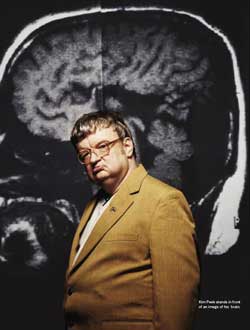
It turns out that the right hemisphere plays a large part in our ability to make ethical decisions and to respond appropriately in social situations. While logic and decision-making are commonly associated with the left hemisphere, researchers found that when they addressed the participants’ left hemisphere by using verbal communication to describe a scenario that required moral reasoning, the participant did not give the expected or usual answer. While there are several interesting points in the article, I was most interested in a study designed to test moral reasoning in participants with split brain syndrome. I found an article that will be of interest to anyone who wants to read more on split brain syndrome: Split Brain Patient Born Without a Corpus Callosum. Retrieved May 27, 2015, from Psychology Today: I hope that you guys find this topic as interesting as I did!īrogaard, B. Overall, I honestly think that the topic of split brain surgery is amazing in and of itself, and then add to that split brain syndrome and split personality disorder and you have yourself fields of information and intriguing articles. Agenesis of the Corpus Callosum (ACC) has the same results as split brain surgery.Īttached is a video on a patient born without a corpus callosum, which not only talks about split brain surgery, but also Agenesis of the Corpus Callosum, which is also just as interesting.

This is call Agenesis of the Corpus Callosum. Similar to split brain surgery, there is also another reason for the disappearance of the corpus callosum, which would simply be the rare birth defect which there is a complete or partial absence of the corpus callosum. The research and the studies done by these men are remarkable. This research eventually won Roger Sperry a Nobel Prize in Physiology in 1981, which I feel was very warranted. Due to the complete split, Peek had the ability to simultaneously read both pages of an open book, and also retain the information he read. When sent for an MRI scan, it revealed that he did not possess a corpus callosum, an anterior commissure, or a hippocampal commissure. Another example of the rare split personality disorder is Kim peek. At one point, Gazzinga and Sperry questioned the boy on what he would like to be when he grew up, and his right side answered “an automobile racer” while his left side responded “a draftsman”. The researchers could then ask each side of his brain a a question. Gazzinga and Sperry had a child participant, named Paul, who had a fully functional language center in both the left and the right hemispheres of his brain. In split personality, the left hemisphere will give orders that reflect the patient’s rational goals, while the right hemisphere issues conflicting demands that actually reveal the patient’s hidden desires.

Th right hemisphere controls the left hand and foot, and the left hemisphere controls the person’s ability to make rational decisions. They found that in these patients the right hemisphere acts independently of the left hemisphere. They found that several of the patients who had undergone a calloscotomy in completion suffered from the split brain syndrome. These two men were the first to study split brains in humans, and what they found was revolutionary. This surgery can also result in split personality, which is also extremely intriguing.Īfter doing more research on split brain syndrome, I found the study by Michael Gazzinga and Roger W.

People who have had this operation, however, are still able to learn in both hemispheres of the brain, but each hemisphere is independent, meaning that the other has no idea what it’s counterpart has learned or experienced. This can result in split brain syndrome, which strongly reflects the separation of the hemispheres by showing changes in behavior and agency. This surgery results in the inability of the two hemispheres to exchange information as efficiently as they once had. I have known quite a few people with epilepsy, but I guess they didn’t have epileptic seizures bad enough to warrant this surgery. Epilepsy is caused by excessive signaling of nerve cells. This surgery is a way to alleviate epileptic seizures, and that’s why it interests me so much. The corpus callosum is the main bond between the left and right hemispheres of the brain. Split brain surgery, which is also called corpus calloscotomy, is the severing of the corpus callosum. Ever since I read about split brain surgery, it has intrigued me to the fullest extent.


 0 kommentar(er)
0 kommentar(er)
